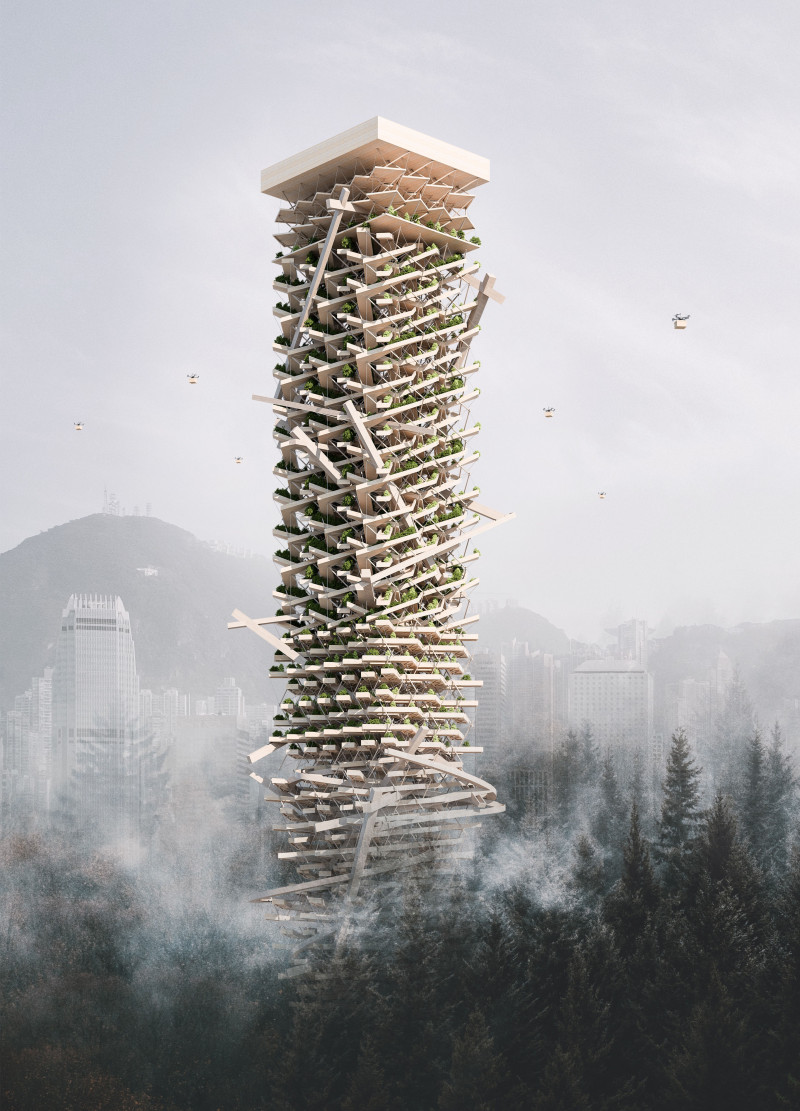5 key facts about this project
Holographic Urban Complex 2051: Tensegrity Park introduces a new way to think about urban spaces by using advanced holographic projection technology. Located in a bustling urban area, the design repurposes shopping facilities into multifunctional public spaces. The central idea focuses on freeing up space to meet a variety of community needs while integrating elements of nature into the city.
Design Concept
The design raises questions about the role of technology in urban life. Does progress mean more use of space, or does it offer true freedom? Holography plays a key role in this project, allowing retail activities to be centralized on the upper levels of a vertical structure. By minimizing the physical space needed for traditional shopping, goods can be easily transported via ramps, creating a more efficient flow for users.
Public Integration
Lower levels of the structure serve the public, transforming what would be typical commercial areas into parks, libraries, vertical farms, swimming pools, and art galleries. This variety promotes community interaction and engagement, replacing isolated shopping experiences with vibrant, shared environments. The integration of vertical farms underscores a commitment to sustainability, providing local food sources while increasing the overall greenery in the area.
Structural Approach
The building uses a tensegrity system, which is a mix of tension and compression elements that create lightweight and flexible structures. This approach allows for tall, slender forms that fit well within the park-like urban setting. The design relies on mathematical principles of tensegrity to generate cohesive spatial modules. This structure creates an open experience for those who navigate through the complex.
Design Features
Gentle slopes in the design of the second and first layers accommodate swimming pools that blend into their surroundings. This arrangement creates spaces for recreation that encourage social interaction. Vertical elements not only support the building but also foster a connection between nature and technology, enhancing the overall urban experience. Embedded within the architecture, these details invite exploration and engagement.



























